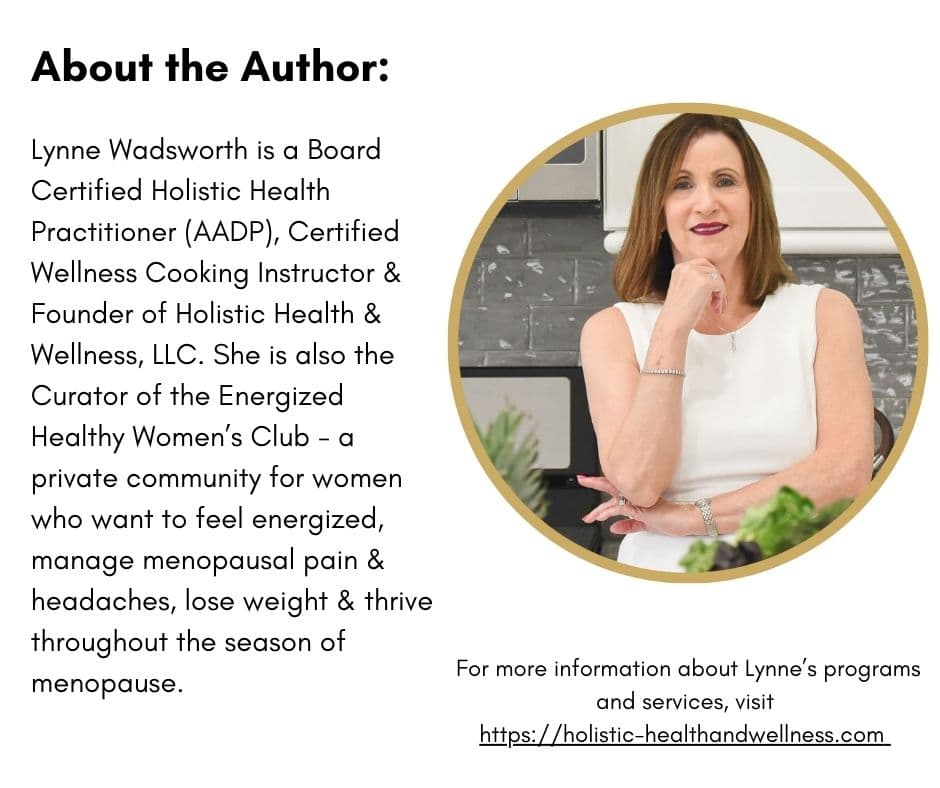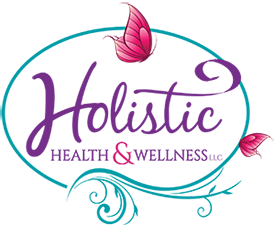In ancient times, spring was associated with renewal, fertility and the triumph of life after death. Today, spring continues to be associated with regrowth, rejuvenation and resurrection. Just as plants and flowers begin to shoot out of the earth, spring is also an ideal time for women in midlife and menopause to pause, examine, reset and refresh their self-care.
Here are some ideas to get you started:
1. Stress & Sleep Support – The Importance of Rest and Restoration

If you have trouble managing stress and getting enough restful sleep, rejoice because there are some holistic, natural methods to help yourself!
As a woman in midlife and menopause, managing stress and getting enough restful sleep is a major key to good health. One way to achieve better sleep and reduce sleep is by resetting the nervous system.
The nervous system is a complex network of cells, tissues, and organs that controls all bodily functions.
It consists of two parts: the Central Nervous System (CNS) and the Peripheral Nervous System (PNS)
The Peripheral Nervous System is divided into the Sympathetic Nervous System and the Parasympathetic Nervous System. The Sympathetic Nervous System prepares the body for “fight or flight” responses, while the parasympathetic nervous system relaxes the body.
Chronic stress keeps our sympathetic nervous system active. Resetting your nervous system helps shift your body and mind from sympathetic system dominance to parasympathetic dominance.
So how can you reset your nervous system?
Here are some ideas:
- Progressive Muscle Relaxation. This involves tensing muscles throughout your body for several seconds, holding, and then releasing. As you move through your body, you will find yourself relaxing.
- Deep breathing. This activates the parasympathetic nervous system, which promotes relaxation. Breathing techniques are a powerful tool to calm your nervous system, slow your heartbeat and relieve insomnia
- Meditation. A regular meditation practice helps calm the mind and reduce stress and anxiety. It can also improve mood, increase focus and concentration and enhance emotional intelligence.
- Gentle stretching. A regular stretching practice can reduce muscle tension and pain, enhance circulation, relieve stress and improve sleep and mood.
These practices can help reduce stress levels and improve sleep.
Another tip is to stimulate the vagus nerve, which is vital for activating the parasympathetic nervous system. You can do this by:
- Humming or chanting. Vibration stimulates the vagus nerve and prompts relaxation
- Cold water immersion. Something as simple as splashing cold water on your face can activate the vagus nerve and shift your body into relaxation mode.
Try these proven holistic techniques today to help reduce your stress levels and promote restful sleep.
2. Nourishing Nutrition – Enjoy Lighter Meals and Eat Seasonal Produce

Spring brings warmer weather, and people may naturally gravitate towards lighter meals that help nourish, renew and refresh the body. Try switching winter foods like chili for a lighter soups like Lemony Roasted Asparagus Soup (1)
You may also want to look into a light salad. One good example is a Grilled Asparagus Salad (2)
But some nutritional guidelines for women in midlife and menopausal women remain the same throughout the year.
Among them:
- Eat foods high in phytoestrogens, such as soybeans, flaxseeds, nuts, whole grains, apples, fennel, celery, parsley and alfalfa. Phytoestrogens are plant compounds that have estrogen-like effects on the body.
- Avoid dairy products. Limit your consumption of small amounts of low fat yogurt or buttermilk.
- Avoid alcohol, caffeine, sugar and spicy foods. They can trigger hot flashes, aggravate urinary incontinence and make mood swings worse.
- Substitute garlic or onion powder for salt when cooking. Consuming salt increases urinary excretion of calcium.
- Drink 2 quarts of quality water each day to help prevent drying of the skin and mucous membranes. (3)
3. Energizing Movement – Getting Active in a Way That Feels Good

As the temperature rises and daylight gets longer, March is the perfect transitional month to take your exercise outdoors. Some popular outdoor exercises include walking, running, bicycling, swimming, yoga, hiking, HIIT exercises, calisthenics and Pilates.
Regular outdoor exercise helps ease menopausal symptoms. (4)
In addition, exercise may help reduce the frequency and severity of hot flashes. (5)
Regular exercise also boosts mood, bone health and the cardiovascular system. It’s imperative for good menopausal care. (6)
As a woman in midlife and menopause, here are some specific guidelines to help you make the transition with grace, prevent osteoporosis and mood swings, and reduce the frequency of hot flashes:
- Try to get in at least three sessions of cardiovascular exercise a week.
- Do strength training exercises. Adding strength training can increase your metabolic rate and help you burn more calories at rest. Strength training and resistance training also can help lower risk of osteoporosis. Osteoporosis is characterized by thin, brittle bones. Strength training helps strengthen muscles and keep bones healthy.
- Add balance exercises to your routine. The increasing risk of hip fractures with aging is due to both increasing bone fragility and loss of balance, leading to increased risk of falling. Yoga and Tai Chi are good options. (7)
4. Hormone Balance & Detox – How to Reset Your Body for Spring

During menopause, estrogen levels drop significantly. This is natural and expected, but it can lead to health complications such as weight gain, cardiovascular disease, osteoporosis and vaginal atrophy. (8)
In addition, metabolism slows down during midlife and menopause, potentially leading to weight gain.
Some common-sense holistic solutions to managing hormonal imbalance includes managing your stress levels, eating nutritiously and exercising.
In addition, getting enough sleep plays a key role in facilitating hormonal balance. A small 2023 study with 100 participants found that levels of cortisol, ghrelin, and growth hormone increased during sleep deprivation, while leptin levels decreased. (9)
You can also try some natural supplements to help balance out your mind and body.
Several key supplements include:
- Essential fatty acids like primrose oil or black currant seed oil. These act as sedatives and diuretics and help manage hot flashes and produce estrogen.
- Soy protein. This contains a form of estrogen, and helps relieve hot flashes and protect against osteoporosis and heart disease.
- Vitamin E. This reduces hot flashes, improves sleep quality, reduces inflammation and alleviates vaginal dryness. (10)
Spring is also an ideal time to reset the body by doing a gentle detox. Five foods that naturally detoxify the body include garlic, turmeric, leafy greens, dandelion root, and beets. You can read more here: https://holistic-healthandwellness.com/foods-naturally-detox/
5. Mindset & Self-Care – Embracing Change and New Beginnings

Step into spring with a fresh outlook on life and a revitalized approach to self-care!
As a woman in mid-life and experiencing menopause, you may want to review your self-care regimen and perhaps add some tips and tricks into your rotation this month.
Examine your self-care routine and make seasonal changes as needed.
In Conclusion:
Take advantage of this transitional time from darkness into light, a natural time of renewal, to renew and refresh yourself and your life.
These are five basic ways you can renew your life from the inside out this month:
- Stress and Sleep Support;
- Lighter Fare and Seasonal Nutrition;
- Frequent Exercise;
- Hormone Balance and Detox; and
- Improving your Mindset and Self-Care.
If you’d like a complimentary clarity session to come up with a holistic roadmap to help practice self-care and manage menopause symptoms naturally, schedule with Lynne Wadsworth here: https://calendly.com/lwadsworth/book-lynne

References
1.https://www.foodandwine.com/recipes/lemony-roasted-asparagus-soup
2 https://www.foodandwine.com/recipes/grilled-asparagus-salad
3 “Prescription for Natural Healing”. By Phyllis A. Balch, CNC page 579 – 582
4 “Encyclopedia of Natural Healing,” S. Gursche, MH, Z Rona, MD, page 946
5.“Encyclopedia of Natural Medicine,” M Murray, N.D. and J Pizzorno, N.D. page 642
6 “Encyclopedia of Natural Medicine,” page 642
7 https://mydoctor.kaiserpermanente.org/mas/news/how-to-exercise-during-menopause-2134018
8 “Prescription for Nutritional Healing,” 5th edition, Phyllis A Balch, CNC., page 578)
9 Arun Kumar Lal Das, Manohar Lal Gupta, Jyoti Priya, Rita Kumari Int J Acad Med Pharm 2023; 5 (6); 1464-1468
10 “Prescription for natural healing,” page 578



